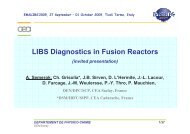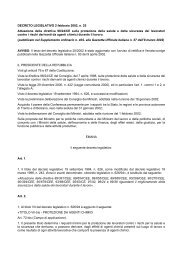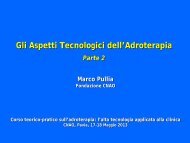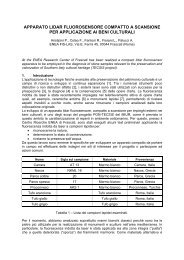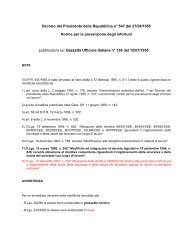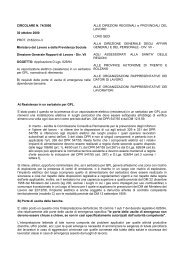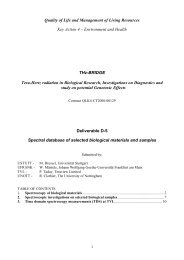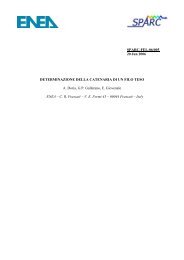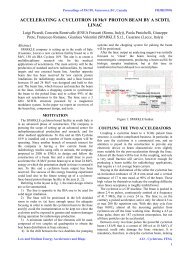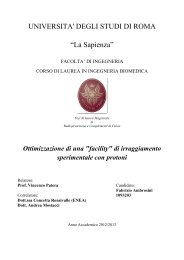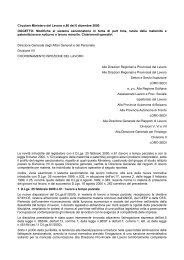Theory, Design and Tests on a Prototype Module of a Compact ...
Theory, Design and Tests on a Prototype Module of a Compact ...
Theory, Design and Tests on a Prototype Module of a Compact ...
Create successful ePaper yourself
Turn your PDF publications into a flip-book with our unique Google optimized e-Paper software.
CHAPTER 3<br />
<str<strong>on</strong>g>Design</str<strong>on</strong>g> Techniques for a Side Coupled Linac<br />
This chapter deals with the techniques used to design the res<strong>on</strong>ant<br />
cavities <str<strong>on</strong>g>and</str<strong>on</strong>g> the other electromagnetic apparatus <strong>of</strong> a Side Coupled<br />
Linac, the emphasis being <strong>on</strong> the particular case <strong>of</strong> LIBO.<br />
A linear accelerator is composed by several systems, as shown in<br />
figure 3.1, namely a particle source (or an injecti<strong>on</strong> system <strong>of</strong> the beam<br />
coming from another accelerator), the res<strong>on</strong>ant accelerating cavities<br />
<str<strong>on</strong>g>and</str<strong>on</strong>g> the magnets for the focusing <strong>of</strong> the beam, the power klystr<strong>on</strong> or<br />
the radi<strong>of</strong>requency power system, the vacuum pumps <str<strong>on</strong>g>and</str<strong>on</strong>g> the cooling<br />
system.<br />
Figure 3.1. Schematic view <strong>of</strong> a Linac.<br />
The design <strong>of</strong> the so-called radi<strong>of</strong>requency apparatus <str<strong>on</strong>g>and</str<strong>on</strong>g> <strong>of</strong> the<br />
electromagnetic aspects <strong>of</strong> a Side Coupled Linac is not an automatic<br />
procedure yet; the most part <strong>of</strong> the design is still a cut <str<strong>on</strong>g>and</str<strong>on</strong>g> paste procedure<br />
where the experimental verificati<strong>on</strong>, namely the RF measurement,<br />
plays the fundamental role.<br />
By using a top-down approach, the design <strong>of</strong> such a structure can<br />
be seen through different levels <strong>of</strong> detail, as shown in figure 3.2.<br />
First, the accelerator is thought as a black box, where the particles<br />
beam goes through. For this case, the parameters <strong>of</strong> interest are numerical<br />
values, namely the entry <str<strong>on</strong>g>and</str<strong>on</strong>g> the output energy <str<strong>on</strong>g>and</str<strong>on</strong>g> velocity<br />
<strong>of</strong> particles, the desired maximum length <strong>of</strong> the chain <strong>of</strong> cavities, the<br />
transit time factor, the peak electric field <str<strong>on</strong>g>and</str<strong>on</strong>g> the feeding frequency.<br />
23





